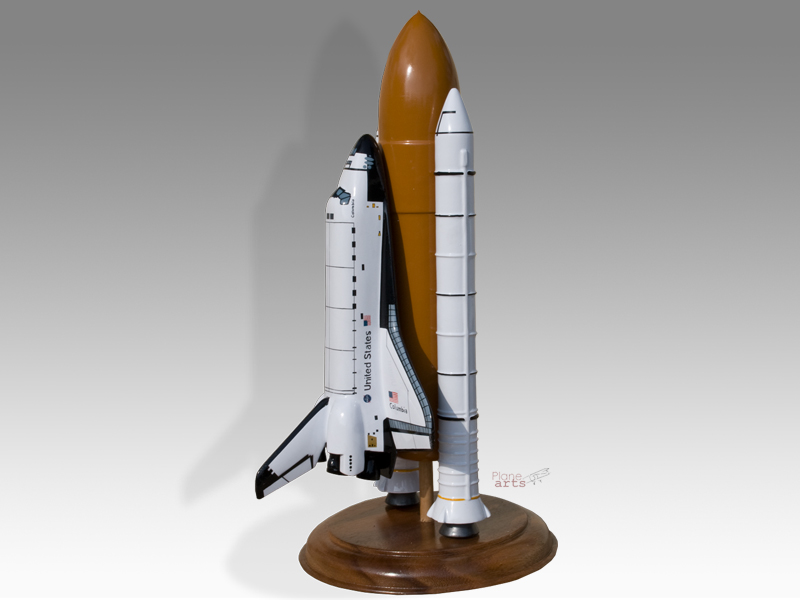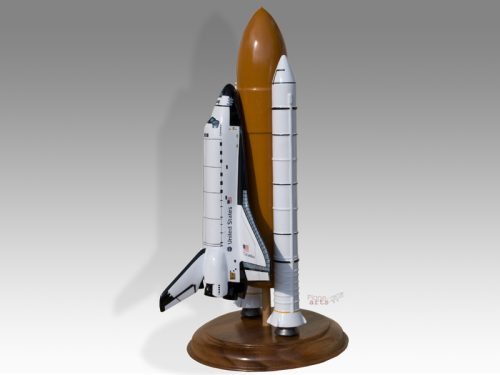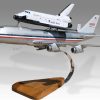Space Shuttle Solid Rocket Booster Columbia
Production Time 9 to 10 weeks
Shipment is by FedEx, UPS or DHL International Express Courier with a normal door-to-door delivery time worldwide of within 2-3 business days after dispatch. Due to the current volatility of world fuel prices, the amount mentioned here is our best estimate for DHL and UPS and may be subject to change at the time of shipping.

Model Description: Space Shuttle Solid Rocket Booster Columbia Wood Replica Scale Custom Model
Wingspan: 7.5 Inches (19.1 Centimeters)
$299.50
Production Time 9 to 10 weeks
-
United States dollar ($)
-
Pound sterling (£)
-
Euro (€)
-
Australian dollar ($)
-
Canadian dollar ($)
-
Singapore dollar ($)
-
Swiss franc (CHF)
-
Japanese yen (¥)
-
Danish krone (kr.)
-
Hong Kong dollar ($)
-
Norwegian krone (kr)
-
Swedish krona (kr)
-
United Arab Emirates dirham (د.إ)
General Product Description
Our PlaneArts Space Shuttle Solid Rocket Booster Columbia model exhibits unique, unrivaled quality and detailed design to come as close as possible to the accuracy of the actual plane. It comes as standard with a robust, durable base or stand which is available in a variety of different finishes designed to match your own personal requirements including solid wood, wood with polished metal supports or adjustable wood wall mount and will be ready within about 9-10 weeks from placement of order.
The Space Shuttle Solid Rocket Booster Columbia is made of the finest kiln dried renewable mahogany wood (commonly known as Lauan or Meranti) which has undergone many stages of carving and meticulous and careful sanding giving the beautiful, finished museum quality masterpiece. Many collectors and model connoisseurs demonstrate their preference for genuine handmade and hand painted mahogany wood models rather than plastic or die cast (diecast) alternatives due to the overall look and totally different feel of the item - we trust you will find the same. We can however, if required produce the same model in Solid Cast Resin so just click and contact us for further information. Our craftsmen and gifted artisans ensure that our finely handcrafted model air and spacecraft match the precise blueprint details of the original version. The paint scheme, markings and parts are closely matched, reflecting the original craft. This stylish top-quality desktop replica model will surely enthrall anyone who receives this as a gift and for sure one of the most appropriate and desirably collectable gifts for every Space or Science Fiction enthusiast and avid Spaceship or Scifi collector whilst also displaying a perfect resemblance to the actual Space Shuttle Solid Rocket Booster Columbia model.
If you require, we can also make the Space Shuttle Solid Rocket Booster Columbia model in any other markings, livery or colour scheme you require and if necessary, in a different size or scale. Just click here to contact us with a description or photographs of what you require, and we will let you have a quotation for the necessary customization by return email. We can also make bespoke scale replicas of any other private / civil commercial airliner or airliners, helicopter, glider, gliders with engines, military jet, warplane jets, propeller warplanes, biplane, triplane, tail fin, spacecraft, rocket or NASA model you require in any airline, military or civilian livery or colors. We also produce Gerry Anderson models, model airship, blimp, dirigible, blimps, boat, and ship collectibles. Wall plaque or seal for military, government or private customers. Wall plaque or seal for military, government or private customers. Again, by clicking here to contact us just let us know exactly what you need.
The Space Shuttle Solid Rocket Boosters: A Look at Their Role in the Columbia Mission
The Space Shuttle Columbia, part of NASA’s STS (Space Transportation System) fleet, relied heavily on its Solid Rocket Boosters (SRBs) to break free from Earth’s gravitational pull. Understanding the function, design, and evolution of these SRBs provides insight into their critical role in the space shuttle missions, including the Columbia.
The Role of Solid Rocket Boosters:
The Solid Rocket Boosters were essential components of the Space Shuttle system. Each shuttle was equipped with two SRBs, which provided the majority of thrust during the first two minutes of the flight. These rockets were responsible for about 83% of the lift needed to propel the shuttle from the launch pad into space. The SRBs worked in conjunction with the Space Shuttle’s main engines and the external tank, creating a powerful combination that allowed the shuttle to enter orbit around Earth.
Design and Specifications:
Each Solid Rocket Booster was approximately 149 feet tall and 12 feet in diameter, making them the largest solid-propellant motors ever flown and the first to be used for primary propulsion on human spaceflights. The design was a marvel of engineering, comprising several segments that were filled with solid rocket propellant. This modular approach allowed for the segments to be manufactured and shipped by rail, then assembled at the Kennedy Space Center.
The SRBs were designed to be reusable, with each booster capable of being flown on multiple missions. After their fuel was expended, the boosters would separate from the shuttle two minutes into flight, descend by parachutes, and be recovered from the ocean. They were then refurbished and prepared for future flights.
Columbia’s Final Mission:
The Columbia shuttle, on its tragic final mission (STS-107), did not fail due to any issues with the Solid Rocket Boosters. The disaster was caused by a piece of foam insulation that broke off from the external tank and struck the leading edge of Columbia’s left wing during launch. This event compromised the shuttle’s thermal protection system, leading to its destruction upon re-entering the Earth’s atmosphere.
Nevertheless, the Solid Rocket Boosters performed as expected during the launch, contributing to the initial success of the mission’s ascent phase. The reliability of the SRBs throughout the Space Shuttle program highlights their significance and effectiveness.
Lessons Learned and Legacy:
The Space Shuttle program, including the missions involving Columbia, demonstrated the capabilities and limitations of reusable rocket technology. Lessons learned from the challenges and tragedies of the program have informed current and future space exploration technologies. Today, advancements in rocketry are seen in the development of more sustainable, efficient, and safer propulsion systems.
The legacy of the Solid Rocket Boosters, despite the eventual retirement of the Space Shuttle fleet, lives on in the design of new boosters and vehicles, such as NASA’s Space Launch System, which borrows heavily from the technology and lessons of the past.
In conclusion, the Solid Rocket Boosters were a foundational technology for the Space Shuttle program, exemplifying both the extraordinary achievements and the profound challenges of space travel. Their contribution to the Space Shuttle Columbia and other missions remains a significant chapter in the history of human spaceflight.
| Weight | 6 kg |
|---|---|
| Dimensions | 17.5 × 7.5 in |









Reviews
There are no reviews yet.